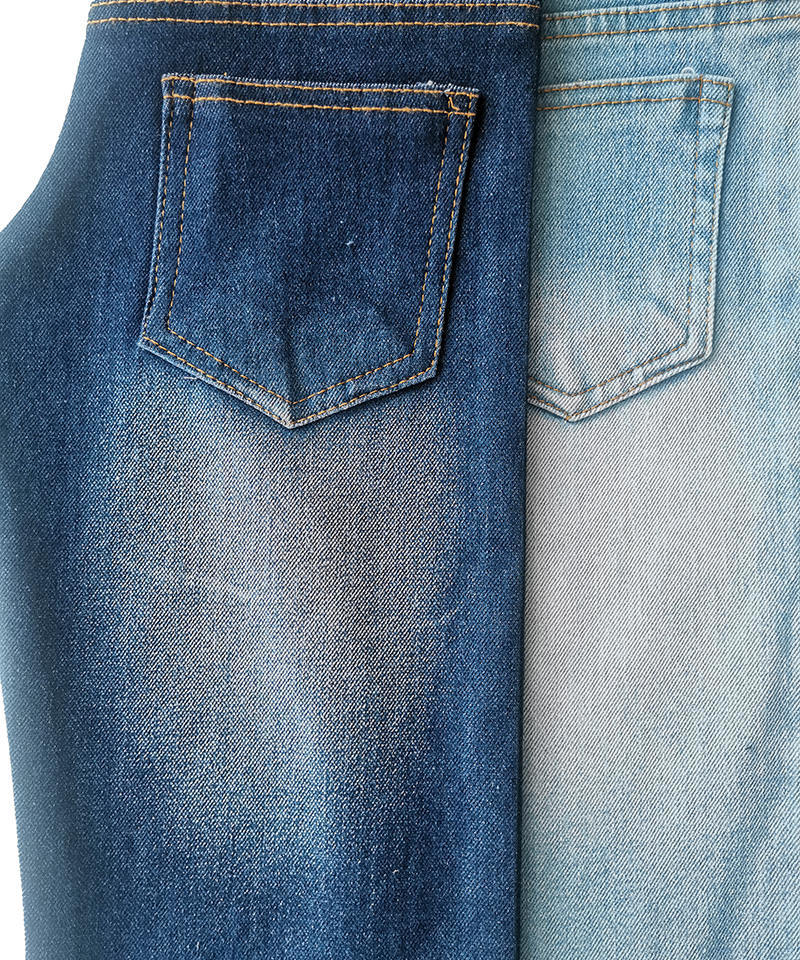I. Evaluation and Significance of Softness
1. Intuitive Feeling and Touch Test
The most direct way to feel the softness of Functional Denim Fabric is to touch it. High-quality functional denim fabrics usually feel delicate and smooth, without any roughness or pricking. This delicate feel often comes from high-quality yarns, fine weaving processes, and reasonable post-processing processes. When touching, you can pay attention to whether the fabric has enough fit, that is, whether the fabric can fit tightly on the skin without too much gap or friction.
2. Wearing Experience and Comfort
Softness is also reflected in the wearing experience. When the fabric is soft enough, the wearer will feel a more comfortable and natural fit, reducing friction and discomfort caused by the fabric being too hard. Especially when wearing for a long time or doing activities, fabrics with good softness can provide better comfort and freedom, making the wearer more comfortable.
3. Relationship between softness and fabric composition
The softness of the fabric is closely related to its composition. Generally, fabrics with a higher proportion of natural fibers (such as cotton) have better softness and breathability. In functional denim fabrics, a certain proportion of synthetic fibers (such as polyester fibers, spandex, etc.) are often added to improve the performance of the fabric. The addition of these synthetic fibers may affect the softness of the fabric, but reasonable proportions and advanced processing technology can ensure that the fabric still has good softness while maintaining performance.
2. Evaluation and significance of elasticity
1. Elasticity test and tensile performance
Elasticity is one of the important characteristics of Functional Denim Fabric. It determines whether the fabric can quickly return to its original shape when subjected to external force, thereby maintaining the shape and size of the clothing. When conducting an elasticity test, you can gently stretch the fabric to observe its stretching degree and recovery speed. High-quality functional denim fabrics usually have good elasticity, can quickly return to their original shape after being stretched, and are not easy to deform.
2. The relationship between elasticity and wearing experience
Fabrics with good elasticity can better fit the body shape and show the perfect beauty of lines. During wearing, the fabric can stretch and contract freely with the movement of the body, reducing the sense of restraint and discomfort caused by the tightness of the fabric. This elastic property is particularly important in tight-fitting garments such as jeans, as it ensures that the garment remains tight and stylish after long-term wear.
3. Elasticity and fabric composition and processing technology
The elasticity of a fabric depends mainly on its fiber composition and weaving process. In functional denim fabrics, a certain proportion of elastic fibers (such as spandex) are usually added to improve the elasticity of the fabric. Advanced weaving technology and post-treatment processes can also have a positive impact on the elasticity of the fabric. The elasticity and recovery performance of the fabric can be further improved by adopting tight weaving technology or special post-treatment processes.
3. Comprehensive evaluation of softness and elasticity
When distinguishing the quality of functional denim fabrics, softness and elasticity are two interrelated and equally important factors. Together, they determine the wearing comfort and shape stability of the fabric. When making an assessment, the performance of these two factors needs to be considered comprehensively.
On the one hand, the softness of the fabric can be felt through touch and wearing experience; on the other hand, the stretchability and recovery speed of the fabric can be evaluated through elasticity testing. The quality level can also be further judged by combining information such as the composition, weaving process and post-treatment technology of the fabric.
4. Precautions and Summary
When evaluating the softness and elasticity of functional denim fabrics, the following points should be noted:
Avoid single evaluation: Do not evaluate the quality of fabrics based solely on softness or elasticity, but consider multiple factors comprehensively.
Focus on fabric composition: Understanding the composition ratio and fiber type of fabrics can help to more accurately determine the source and performance of its softness and elasticity.
Combined with wearing needs: Choose the appropriate softness and elasticity level according to the wearer's needs and scenarios. For clothes that need to be worn for a long time or for strenuous exercise, you can choose fabrics with moderate softness and good elasticity.



 English
English Español
Español















